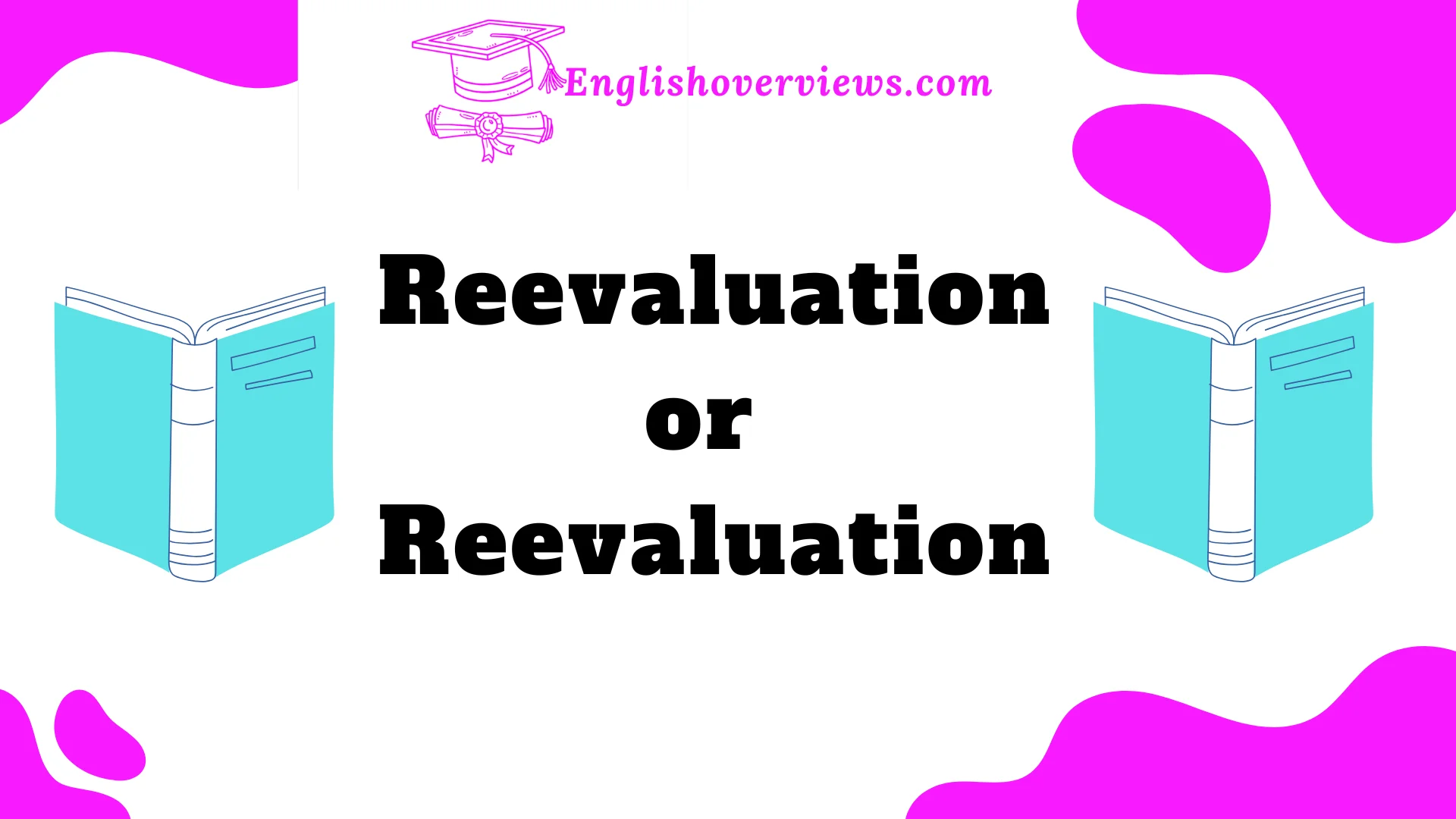When it comes to writing in English, hyphenation is often a tricky subject. Should you write “reevaluation” as one word or split it with a hyphen as “re-evaluation”? This decision might seem small, but it can significantly affect readability, clarity, and professional tone.
Understanding the rules of hyphenation—especially with the prefix “re-“—is essential for producing error-free and polished content.
In this guide, we’ll dive deep into the nuances of hyphenation, particularly focusing on the “re-” prefix. By the end, you’ll not only know which option to choose but also understand why it matters.
Along the way, we’ll share real-world examples, useful tips, and even a few pitfalls to avoid. Whether you’re writing a formal report or an email, mastering this skill will enhance your communication.
Introduction to Hyphenation in American English
Hyphenation refers to the use of a hyphen (-) to connect words or parts of words. It plays a vital role in creating clear and concise sentences. But why does it matter? Because misusing hyphens can lead to confusion or even alter the meaning of a phrase.
Why Is Hyphenation Important?
- Clarity: A hyphen helps clarify meaning. For example, “re-cover” (cover again) vs. “recover” (to heal).
- Readability: Well-placed hyphens make sentences easier to read.
- Professionalism: Proper hyphenation conveys attention to detail.
In American English, hyphenation rules are guided by grammar standards and trends, with preferences leaning toward simplification. Unlike British English, which often retains hyphens, American English tends to drop them unless absolutely necessary.
The Evolution of Hyphenation
The trend in modern English writing leans toward minimizing hyphen use unless required for meaning. Words like “email” and “online” were once written as “e-mail” and “on-line.” However, prefixes like “re-“ still follow specific rules, which we’ll explore next.
When to Hyphenate: The Prefix “Re-” Explained
The prefix “re-“ means “again” or “back” and is commonly used in English. Words like “rebuild” and “redo” are familiar examples. But not all “re-” words are created equal—some require a hyphen, while others don’t.
When Is a Hyphen Necessary?
- To Avoid Ambiguity: Use a hyphen when the word could be misunderstood without it.
- Examples:
- “Re-sign” (to sign again) vs. “resign” (to quit a job).
- “Re-cover” (to cover again) vs. “recover” (to regain health).
- Examples:
- With Proper Nouns: Use a hyphen when attaching “re-” to a proper noun.
- Example: “Re-Americanize.”
- When the Root Word Begins with “E”: To prevent awkward spelling, hyphenate when the root word starts with an “e.”
- Example: “Re-evaluate.”
When Is a Hyphen Not Required?
- When No Ambiguity Exists: If the meaning is clear, skip the hyphen.
- Example: “Rewrite” (write again).
- Short, Familiar Words: Common “re-” words like “redo” or “refill” don’t need a hyphen.
The General Rule for Prefixes in English
In English, prefixes like “re-“, “pre-“, and “non-“ usually follow the same guidelines for hyphenation. Understanding these rules ensures your writing is grammatically sound.
| Prefix | When to Hyphenate | Example |
| Re- | To avoid ambiguity or when root begins with “e” | Re-evaluate, Re-cover |
| Pre- | Before proper nouns or to prevent misreading | Pre-World War, Pre-existing |
| Non- | To avoid confusion or create clarity | Non-negotiable, Non-event |
Exceptions to Prefix Rules
- Style Guide Variations: Some organizations or publications have their own rules. For instance, AP Style often avoids hyphens.
- Evolving Language Trends: Words that once required hyphens (e.g., “re-send”) may now be written as single words (“resend”).
Understanding the Meaning of “Re-” and Its Exceptions
The prefix “re-” primarily means “again” or “back”, but the presence of a hyphen can change its interpretation.
Examples of “Re-” with and Without Hyphens
- Re-create: To create again.
- Recreate: To enjoy leisure activities.
Exceptions to Note
Some words retain their meaning regardless of hyphenation. For example, “rebuild” and “re-build” are rarely confused. However, always prioritize clarity when in doubt.
Reevaluation vs. Re-evaluation: Which is Correct?
This is the crux of the matter! Should you write “reevaluation” or “re-evaluation”? The answer largely depends on geographical preference and style guides.
American English vs. British English
- American English: Prefers “reevaluation” without the hyphen.
- British English: Often retains the hyphen as “re-evaluation.”
Style Guide Preferences
- Merriam-Webster: Lists “reevaluation” as the standard spelling.
- Chicago Manual of Style: Encourages dropping the hyphen unless clarity demands it.
- Oxford English Dictionary: Leans toward “re-evaluation.”
The Impact of Omitting Hyphens in Common Usage
Skipping a hyphen can lead to miscommunication or awkward phrasing. Let’s look at some examples.
Examples of Misinterpretation
- Without Hyphen: “I need to recover the sofa.”
- With Hyphen: “I need to re-cover the sofa.”
| Scenario | Without Hyphen | With Hyphen |
| Clarifying intent | “Recover” (heal) | “Re-cover” (cover again) |
| Avoiding misreading | “Resign” (quit) | “Re-sign” (sign again) |
| Ensuring professionalism | “Resend” (uncommon use) | “Re-send” (clear intent) |
The Importance of Clarity in Professional Writing
In professional settings, precision is key. Misplaced or omitted hyphens can damage credibility, especially in technical or formal writing.
Case Study: Legal Documents
In legal writing, a missing hyphen can create ambiguities that lead to disputes. For example:
- “Re-lease” (grant a lease again) vs. “Release” (set free).
Quote: “A small punctuation mark can have a big impact in the courtroom.” – Legal Writing Expert
Capitalization and Hyphenation: Special Case for Titles
Hyphenation rules extend to titles and headings, where readability matters most. For example:
- Correct: “Re-evaluating Modern Trends.”
- Incorrect: “Reevaluating modern Trends.”
Tips for Title Hyphenation
- Capitalize both parts of a hyphenated word in titles.
- Ensure consistency across all headings.
Conclusion: Best Practices for Hyphen Usage with “Re-evaluate”
To master hyphenation:
- Prioritize clarity: Always hyphenate when confusion is possible.
- Know your audience: American readers often prefer “reevaluation.”
- Follow style guides: Stick to the rules of your chosen guide.
Quick Tip: When in doubt, consult a trusted dictionary like Merriam-Webster.
FAQs
1. Is “reevaluation” correct in American English?
Yes, “reevaluation” is preferred in American English according to most style guides.
2. Do British English writers use “re-evaluation”?
Yes, British English often retains the hyphen.
3. When should I use a hyphen with “re-“?
Use a hyphen to avoid ambiguity or when the root word starts with “e.”
4. Does omitting a hyphen change meaning?
Yes, omitting a hyphen can significantly alter the meaning of a word.
5. What’s the best way to decide on hyphenation?
Consult a style guide or dictionary and consider your audience.

English Overviews is a resourceful website dedicated to providing valuable content related to grammar and vocabulary. Muhammad Haroon has made notable contributions, sharing insights on various subjects, including WordPress themes and plugins. The primary goal of the site is to help users improve their English language skills effectively.











